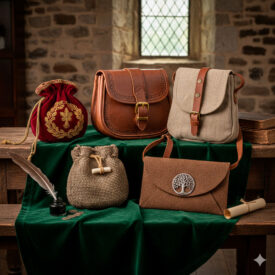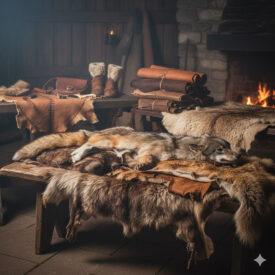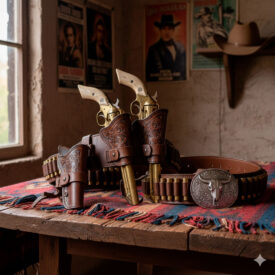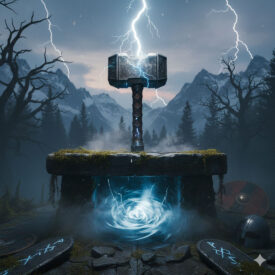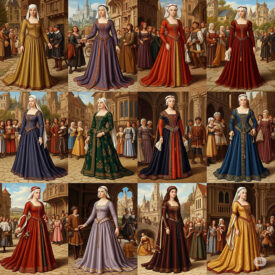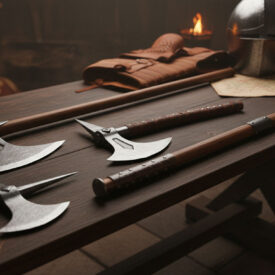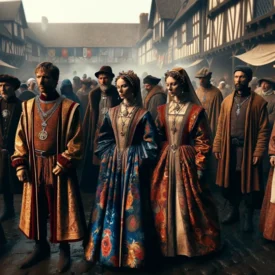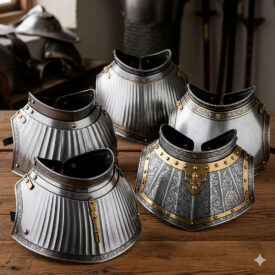What animates the medieval workshop when the forge door opens? A hammer’s blow, the orange glow of red-hot metal, and the smell of coal paint a picture of trades that sustained daily life and the great works of medieval Europe.
In this journey, you will learn how essential tools were forged (anvil, hammer, adze), what materials artisans used, how guilds were organized, and which techniques remain useful today. I will take you from the forge to the masons’ lodge, with images and replicas that connect past and present.
Placing Artisans’ Tools in Time
Tools are not born out of nothing: they evolve. The following timeline outlines advancements and milestones that explain how medieval craftsmanship reached its peak.
| Era | Event |
|---|---|
| Antiquity and Late Roman Period (2nd Century B.C. – 5th Century A.D.) | |
| 2nd Century B.C. | Cato documents the wide variety of agricultural implements, indicating an early instrumental specialization in the Roman world. |
| 1st–2nd Century A.D. | Finds in the Rhine Valley (Italy) show blacksmith’s tools: hammers, cold chisels, punches, chisels, and compasses. |
| Late Roman Period | Settlements in villas (e.g., Fuentespreadas, Zamora) present sets of tools that symbolize leadership and control over the villa’s labor. |
| Late 4th – early 5th Century | Fuentespreadas funerary equipment: agricultural and livestock tools (sickle falx messoria type, pruning hook falx arboraria, forfex pincers) and trade tools (gouges, augers, possible plane blade, adze, dolabra/ascia axes, cold chisels, blacksmith’s chisels, punchers, compass). |
| High and Full Middle Ages (5th – 14th Century) | |
| Mid-5th Century | Appearance of the technique of marking lines with a cord impregnated with almazarrón (linseed oil) to draw straight lines; documented in German codices. |
| 7th and 9th Centuries | The monastery of Sankt Gallen receives taxes in iron horseshoes, evidence of the value and circulation of metal pieces. |
| 9th Century | The Utrecht Psalter depicts a rotating grindstone used to sharpen swords, reflecting the technical maintenance of weapons and tools. |
| 11th Century | The monk Theophilus writes Schedula diversarum artium, discussing techniques and materials (e.g., colored glass production) and disseminating technical knowledge. |
| Early 11th Century | Manuscript depictions of the wheelwright’s axe (short handle, double bevel) used for roughing and squaring timber. |
| 12th Century | Introduction of the Gothic style in the Iberian Peninsula, which required new techniques and tools for construction and carpentry. |
| 12th–14th Centuries | Construction and finishing phase: scarcity of furniture and rudimentary finishes attributed to a limited range of tools; evolution towards more complex wooden structures (roofs) begins. |
| 13th Century | Villard d’Honnecourt’s notebook offers data on timber framing, masonry, machines, and drafting; it serves as a technical vademecum. |
| Mid-13th Century | Representation of the wheelbarrow (carretó or bolquet) in miniatures, reflecting means of material transport. |
| 12th–14th Centuries | Appearance of textile tools such as lever shears and the templén (tensioner for the horizontal pedal loom); the templén documented in sites like Calatrava la Vieja. |
| 14th Century | Miniatures show carpenters using planes (jac or garlopa). Preservation of the only known medieval “Taula de vitraller” (Girona Cathedral) illustrating the glazier’s tool. |
| Late Middle Ages (15th Century) | |
| 15th Century (general) | Period of extensive pictorial documentation on construction tools; studies focused on Europe and with an emphasis on Valencia. |
| Mid-15th Century | Tongs appear in codices; the short-handled adze with a transverse cutting edge (possible Spanish design) depicted in painting (Epiphany altarpiece, Calatayud); the plane/garlopa begins to appear in codices towards the end of the century. |
| Late 15th Century | Guild organization: construction trades in Valencia were considered an international fraternity of workers and adopted consolidated guild structures towards the end of the century. |
| 15th–16th Centuries | Mudejar workshop carpentry shows limitations in fine finishing due to the available tools in contrast to the furniture of Christian carpenters. |
| Continuity and Evolution (Post-medieval) | |
| 16th Century | The term “Architect” emerges; previously, those responsible for works were known as Magister operis, Mestre d’obra, etc. |
| 18th Century | Blacksmith’s tongs become widespread in Spain and frequently appear in iconographic representations (instruments of the Passion). Mechanical means for working wood (water-powered ironworks) are also installed in some countries like England. |
| 19th–20th Centuries | Revolution in carpentry: mechanization, motors, and computing transform the profession. Traditional hand tools (saw, plane, chisel) change little in design, although the material of cutting surfaces improves (steel versus iron). |
The Forge and the Anvil: The Workshop That Fed the City
The blacksmith was the linchpin. From the forge came nails for construction, hardware for doors, and pieces that served farmers and warfare. The forge (fornal) and the anvil were the heart of the workshop; tongs, hammers, and chisels, its precision instruments.
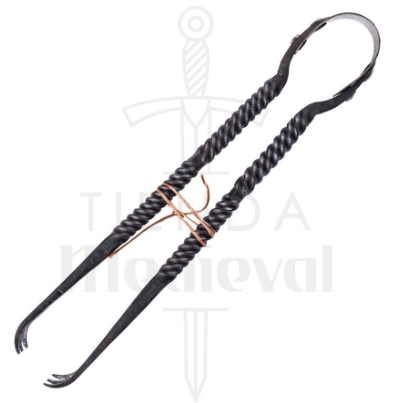
Carpentry and Cabinetmaking: Enduring Forms
Medieval carpentry combines strength and delicacy: the axe and adze rough out; the plane and chisel define. Trades specialized (timber carpenters, shipwrights, cabinetmakers) and tools reflected these roles.
Key tools: axe, adze, two-handed saws, chisels, planes, and augers. Mastery of drawing and measurement — from compasses to the cord impregnated with almazarrón — ensured precise assemblies.
Stone Works and Scaffolding: The Era of Cathedrals
Masons combined physical strength with surprising technical knowledge: wedges, mallets, and gauges were the foundation, but they also worked with full-scale patterns and templates. The coordination between masons and image-makers produced the facades we associate with Gothic today.
Mason’s Tools and Processes
-
Wedges and mallets: for extracting blocks from the quarry.
-
Chisels and gouges: for sculptural detail.
-
Gauge and patterns: measurement and dimensional control.
Textiles, Sewing, and the Feel of Thread
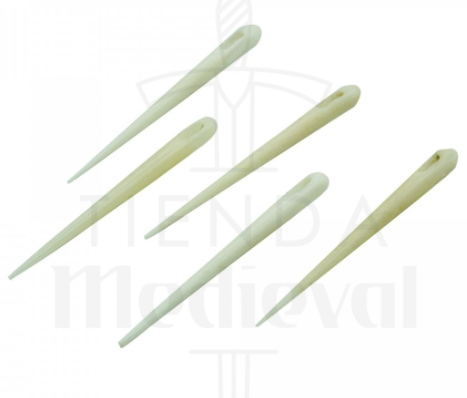 Spinning, weaving, and finishing depended on simple and efficient tools: spindle, distaff, spinning wheel, and templén. Textile work was an ecosystem where each instrument played a specific role in the production chain.
Spinning, weaving, and finishing depended on simple and efficient tools: spindle, distaff, spinning wheel, and templén. Textile work was an ecosystem where each instrument played a specific role in the production chain.
For sewing and mending, bone or iron needles, awls, and riveters were used for metallic elements in clothing and light armor.
Materials and Techniques: Wood, Iron, Horn, and Bone
Artisans chose materials based on availability and properties: oak for structures, lime for fine carving, iron for tools and blades, horn and bone for handles and utensils. Empirical knowledge about each material was one of the drivers of artisanal innovation.
Multifunction Tools and Workshop Production
Multifunctionality was a virtue: tongs and hammers served for different jobs, the forge produced nails and hardware, and workshops became service centers for the community. Specialization grew within a guild framework that regulated quality and access to raw materials.
Essential Tools and Available Replicas
If you are interested in trying historical techniques, today there are replicas and tools inspired by medieval models that retain the original ergonomics and appearance.
Comparison: Medieval vs. Modern
Although the basic design of many tools changed little, materials and production did evolve. Below you will see a table summarizing key differences and a mobile format for consultation on small screens.
| Type | Usual Material (Medieval) | Transformation/Use (Modern) |
|---|---|---|
| Hammer and Anvil | Wrought iron, wood in the handle | Tempered steel, ergonomic handles |
| Chisels and Gouges | Forged steel, artisanal tempering | High-carbon steel, industrial sharpening |
| Saws | Iron blade and hand-filed teeth | Alloy steel blades and machined teeth |
- Hammer and Anvil
-
- Material: Wrought iron and wood.
- Use: Forging and shaping metals.
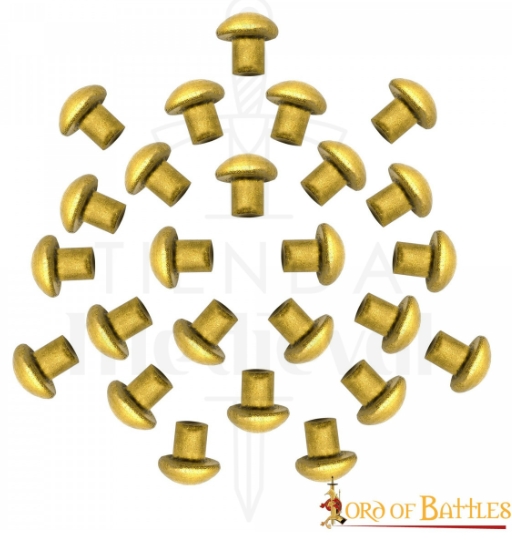
How Trades Were Organized: Masters, Journeymen, and Apprentices
Guild organization regulated access to tools and set standards. The master owned the workshop and tools; the journeyman executed with them; the apprentice learned to use them until achieving mastery. This system ensured technical transmission and quality control.
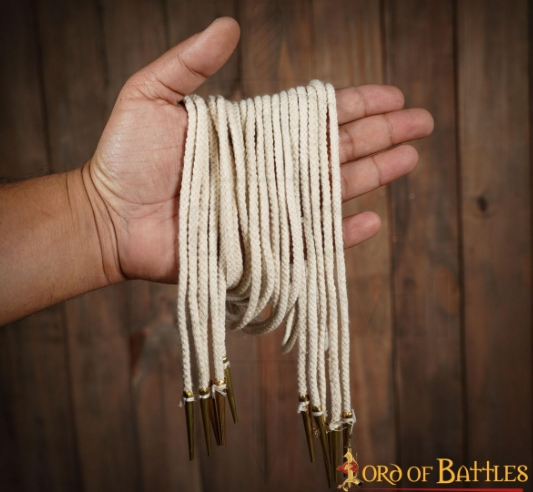
Techniques That Left Their Mark
-
Tempering and forging: increased hardness in points and edges, key for weapons and cutting tools.
-
Tracing with impregnated cord: a simple and effective method for marking straight lines in construction and carpentry.
-
Design germination: full-scale patterns and technical notebooks (e.g., Villard d’Honnecourt) that disseminated constructive solutions.
Conservation and Maintenance Practices
Maintenance was part of the trade: sharpening on grindstones, protection with oils, and handle repair. Many of these cares are applied today to preserve historical tools or functional replicas.
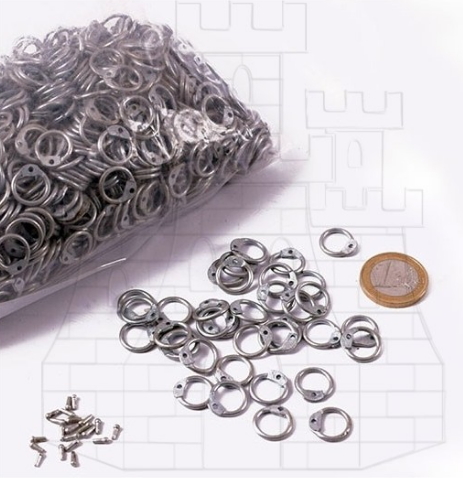
Clearing Up Questions About Medieval Tools and Craft Techniques
What were the most innovative tools used by medieval artisans?
The most innovative tools used by medieval artisans included:
- Forged iron tools with rust resistance, a result of advanced forging techniques that made them very durable and versatile.
- Working instruments made of horn and bone, molded with thermal processes that allowed for ergonomic knife handles or waterproof containers.
- Folding wooden tripods with a simple structure to hold pots and cure food, leveraging reusable natural materials.
- Heavy iron plows, which improved agricultural efficiency compared to wooden plows.
- Multifunction tools like blacksmith’s tongs, which combined several uses in a single instrument.
- Additionally, artisans developed products such as ovens that heated faster and grease lamps that illuminated for a long time.
These innovations stood out for their functionality, durability, and efficient use of available materials, some with technical principles still applied today.
How did medieval tools influence the evolution of artisanal techniques?
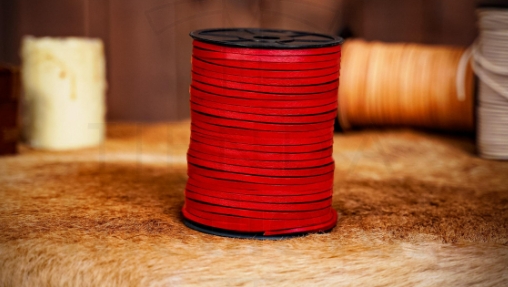 Medieval tools influenced the evolution of artisanal techniques by providing basic and specific instruments, such as anvils, chisels, hammers, and needles, which allowed artisans to create high-quality objects with technical diversity. These tools facilitated the manufacture of weapons, utensils, garments, and decorative objects with precision, fostering innovation and specialization in trades such as forging, carpentry, ceramics, and sewing. Furthermore, the use of personalized tools and techniques passed down through generations maintained and refined artisanal knowledge, laying the groundwork for modern processes in manufacturing and design.
Medieval tools influenced the evolution of artisanal techniques by providing basic and specific instruments, such as anvils, chisels, hammers, and needles, which allowed artisans to create high-quality objects with technical diversity. These tools facilitated the manufacture of weapons, utensils, garments, and decorative objects with precision, fostering innovation and specialization in trades such as forging, carpentry, ceramics, and sewing. Furthermore, the use of personalized tools and techniques passed down through generations maintained and refined artisanal knowledge, laying the groundwork for modern processes in manufacturing and design.
In summary, medieval tools served not only as support for technical execution but also as a driver of creativity and development, allowing for artisanal production that combined functionality and aesthetics, transmitting secrets and skills that propelled technical and cultural evolution in craftsmanship.
What materials were most common for making tools in the Middle Ages?
The most common materials for making tools in the Middle Ages were primarily iron and steel for metal tools, given advancements in forging, along with materials like wood, bone, horn, and stone for various tools and utensils. Iron and steel were used for knives, cooking utensils, and working tools; wood, horn, and bone were used for handles, needles, and other everyday objects due to their availability and ease of working. Additionally, copper, bronze, and silver were employed for vessels and decorative objects.
How were tools distributed and used among the different medieval guilds?
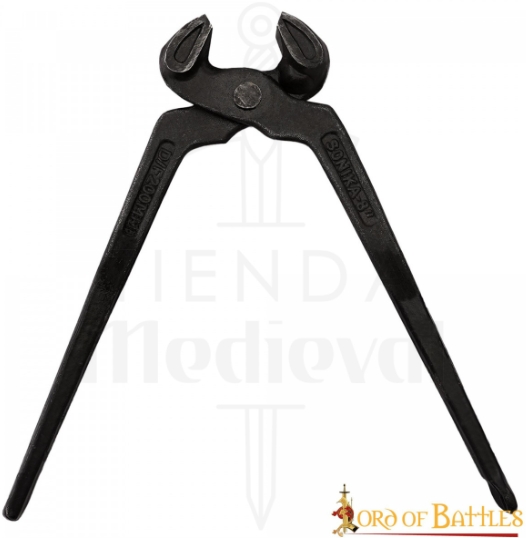 The distribution and use of tools among the different medieval guilds varied according to each guild’s specialization. In general, guilds were corporate structures that regulated production and protected the interests of their members, ensuring quality and control over manufacturing processes.
The distribution and use of tools among the different medieval guilds varied according to each guild’s specialization. In general, guilds were corporate structures that regulated production and protected the interests of their members, ensuring quality and control over manufacturing processes.
Tool distribution:
- Masters: They owned the workshops and tools, which constituted their main capital. Tools were specific to each art or trade.
- Journeymen: They worked under the supervision of masters and used the workshop’s tools to perform their work.
- Apprentices: They learned to use the tools by working under the tutelage of masters, without receiving a salary, but indeed food and lodging.
Use of tools:
- Specific guilds: Each guild required specialized tools. For example, carpenters needed tools like hammers, saws, and planes, while masons used trowels, floats, and chisels.
- Guild control: The quantity and type of tools used were regulated by guild ordinances to maintain product quality and control production.
| Type | Blade Length (approx.) | Era | Tactical Use |
|---|---|---|---|
| Hispaniensis | 60–68 cm | 3rd–1st Century B.C. | Versatile: powerful cuts and thrusts in closed formations. |
What differences existed between the tools used in the Middle Ages and modern ones?
There were several significant differences between the tools used in the Middle Ages and modern ones:
- Materials and Design: Medieval tools were made primarily of wood, iron, and other natural materials, while modern tools are manufactured with more durable and technologically advanced materials such as stainless steel, metal alloys, and plastics.
- Technical Complexity: Medieval tools were simpler and more rudimentary. For example, the heavy plow and water mills were advanced technologies for their time, but they lacked the precision and energy efficiency offered by modern machines.
- Efficiency and Productivity: Modern tools are designed to maximize efficiency and productivity, while medieval tools required more manual effort. For example, modern tractors and harvesters can cover extensive areas in a short time, which was not possible with the plows and hand tools of the Middle Ages.
- Automation and Mechanization: In the Middle Ages, most work was done manually or with the help of animals, whereas in the modern era, machines and automation have revolutionized production and work, allowing for more complex and specialized tasks.
- Accessibility and Cost: Modern tools are more accessible and affordable for a wide range of people, thanks to industrialization and mass production. In the Middle Ages, access to tools was limited, and their manufacture was more costly and exclusive.
- Precision and Measurements: Modern tools offer much greater precision in terms of measurement and functionality. For example, mechanical clocks in the Middle Ages were a great innovation, but modern clocks are more accurate and available to everyone.
The tools of the Middle Ages were the result of centuries of technical accumulation and practice. Today, understanding their design, use, and social significance helps us appreciate the skill of artisans and inspire functional replicas that connect the modern enthusiast with historical crafts.
FORGING TOOLS | SHARPENERS | SEWING NEEDLES | MEDIEVAL BUTTONS | LUBRICANTS FOR BLADED WEAPONS

